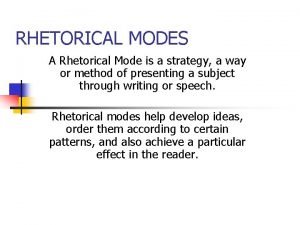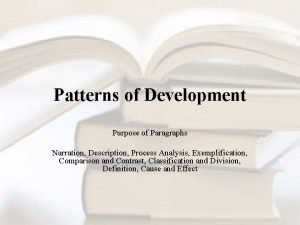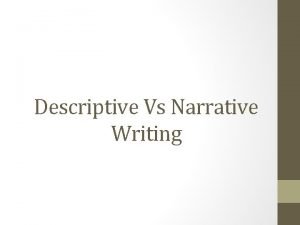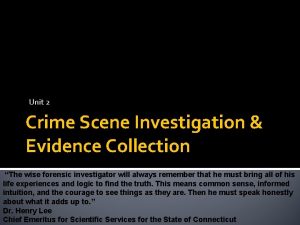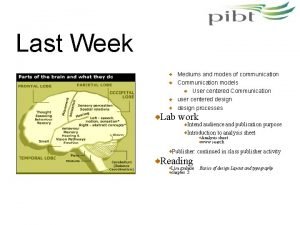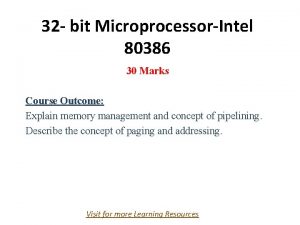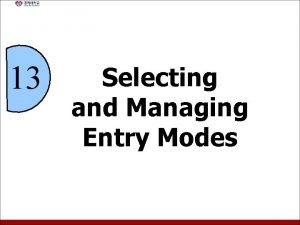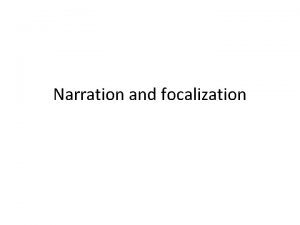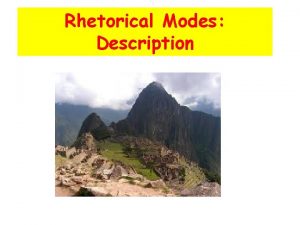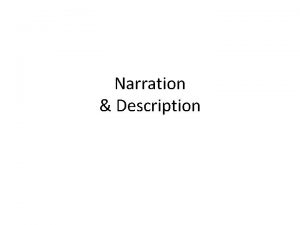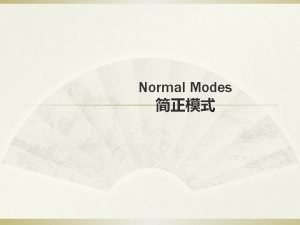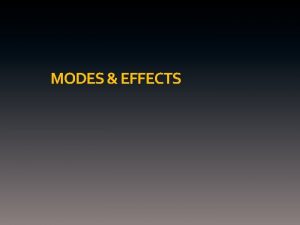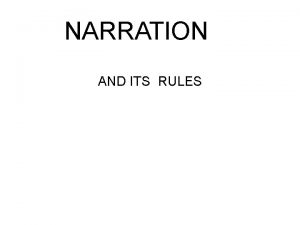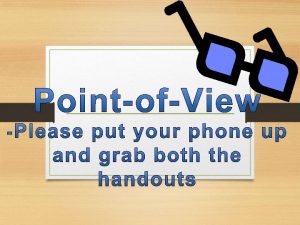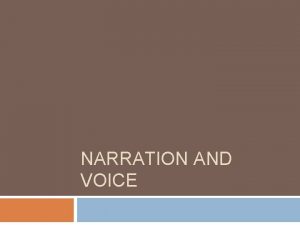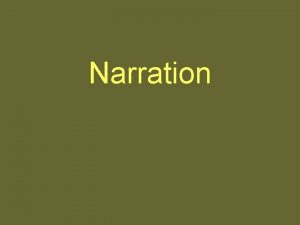SEVEN MODES Narration and Description Narration and Description












- Slides: 12

SEVEN MODES: Narration and Description

Narration and Description A writer who narrates tells a story to make a point. A writer who describes evokes the senses to create a picture. The two strategies can be used independently, but they work best in combination if you want to write a detailed account of some memorable experience.

Purpose: 1. To introduce or illustrate a subject as part of a larger purpose. � Examples: 2. To begin an analysis of the energy crisis, a writer might tell a personal anecdote that dramatizes wastefulness. To conclude an argument for gun control, a writer might use a graphic anecdote describing the consequences of a school shooting. As the primary method to analyze an issue or theme. � Examples: A narrative essay telling the story of a writer’s experiences in a foreign country may serve to describe a new awareness of patriotism. A descriptive essay detailing a unique person may serve to argue for appreciation of diversity.

Purpose 3. To “shed light” on a subject. Used by biographers/autobiographers and authors of history and fiction. Examples: An account of historical events that describes why events happened as they did A story of a person’s life describing particularly influential experiences A description of characters in a work of fiction and how they relate to one another

Audience 1. Consider: The level of audience awareness of the subject How much should be told to the audience If writing from personal experience, few readers will be aware of the subject If writing on a subject common to the human experience, readers may have a broader base of knowledge and experience Explicit, efficient, technical details to clarify an experience or situation Necessary to clarify an unusual subject or experience, such as witnessing the takeoff of the space shuttle or the eruption of a volcano How much should be shown to the audience Fresh, effective details to illustrate an experience in a new, engaging way Sensory information that will allow a reader to clearly imagine an experience or subject Often conveyed with figurative language such as imagery or metaphor

STRATEGIES – to convey a distinct purpose and a clear focus: 1. Locate a central conflict � Between writer and self � Between writer and others � Between writer and environment � Arrange the plot as a coherent sequence of events � Simple chronology � Begin in the middle, near the end, or some time after the event(s) � Must consider purpose to establish appropriate sequence of events

STRATEGIES – to convey a distinct purpose and a clear focus: 3. Establish pace of events � Narrate quickly by omitting details, compressing time, and summarizing � Narrate slowly by including many details, expand on time, and present entire scope of the scene rather than a summary 4. Select details appropriately � Objective or technical detail will increase fundamental understanding � Subjective or impressionistic detail will appeal to reader’s senses

STRATEGIES – to convey a distinct purpose and a clear focus: 5. Determine point of view � � � Establishes author’s position in the action, time, and scope of events Greatly influences the creation of a dominant impression in narrative First person – “I”, “We” � Directly involved in the events of the experience Allows revelation of feelings and thoughts Third person – “They” Objective Conveys only that which may be inferred from action or dialogue Gives no subjective analysis Establishes writer as a detached observer Omniscient Has knowledge of thoughts and feelings of characters Can offer subjective analysis Provides flexibility in the establishment and conveyance of the attitude of the writer

STRATEGIES – to convey a distinct purpose and a clear focus: Determine the tone and mood (dominant impression) you want to use: (see tone and mood ppt) First decide what tone you want to present Next consider the mood you want to evoke in your readers Finally, consider: word choice Elaboration creating incongruities (if you want an ironic or satirical tone), Omission Patterns allusions

POINTS TO REMEMBER: 1. 2. 3. 4. 5. 6. Focus your narrative on the “story” in your story – that is, focus on the conflict that defines the plot. Vary the narrative pace so that you can summarize some events quickly and render others as fully realized scenes. Supply evocative details to help your readers experience the dramatic development of your narrative. Establish a consistent point of view so that your readers know how you have positioned yourself in your story. Represent the events in your narrative so that your story makes its point. Consider tone and mood

Narration and Description Original Essay #1

Your assignment DESCRIPTION and NARRATION ORIGINAL ESSAY SUBJECT: The place you wrote about in your journal (or another place that has impacted you) PURPOSE: To give a "creative vision" of an everyday place to the reader To create a strong dominant impression (or mood) CONTENT: Use as much of the concrete, specific detail and sensory language that you recorded in your journal entries as you can. THEN add more! ORGANIZATION: There must be a clear (to me & the readers) principle of organization, Establish and use a consistent point of view AUDIENCE: Your teacher and your classmates. What can you safely assume we know? LENGTH: MINIMUM of 2 pages, typed (12 point type) and double-spaced. Use the previous slides as your guide for writing: I will use the points to remember as a rubric when I grade your work
 Definition as a rhetorical mode
Definition as a rhetorical mode Deadly sins and heavenly virtues
Deadly sins and heavenly virtues Short paragraph that has the same pattern of development
Short paragraph that has the same pattern of development Narrative vs descriptive writing
Narrative vs descriptive writing What are the seven s of crime scene investigation
What are the seven s of crime scene investigation Crafting messages for electronic media
Crafting messages for electronic media Bipap settings for copd
Bipap settings for copd Modes and mediums
Modes and mediums Difference between real mode and virtual mode of 80386
Difference between real mode and virtual mode of 80386 Potential market
Potential market Compositional modes for digital and social media
Compositional modes for digital and social media What is persuasion matrix
What is persuasion matrix Port a + port c upper forms group b ports
Port a + port c upper forms group b ports
